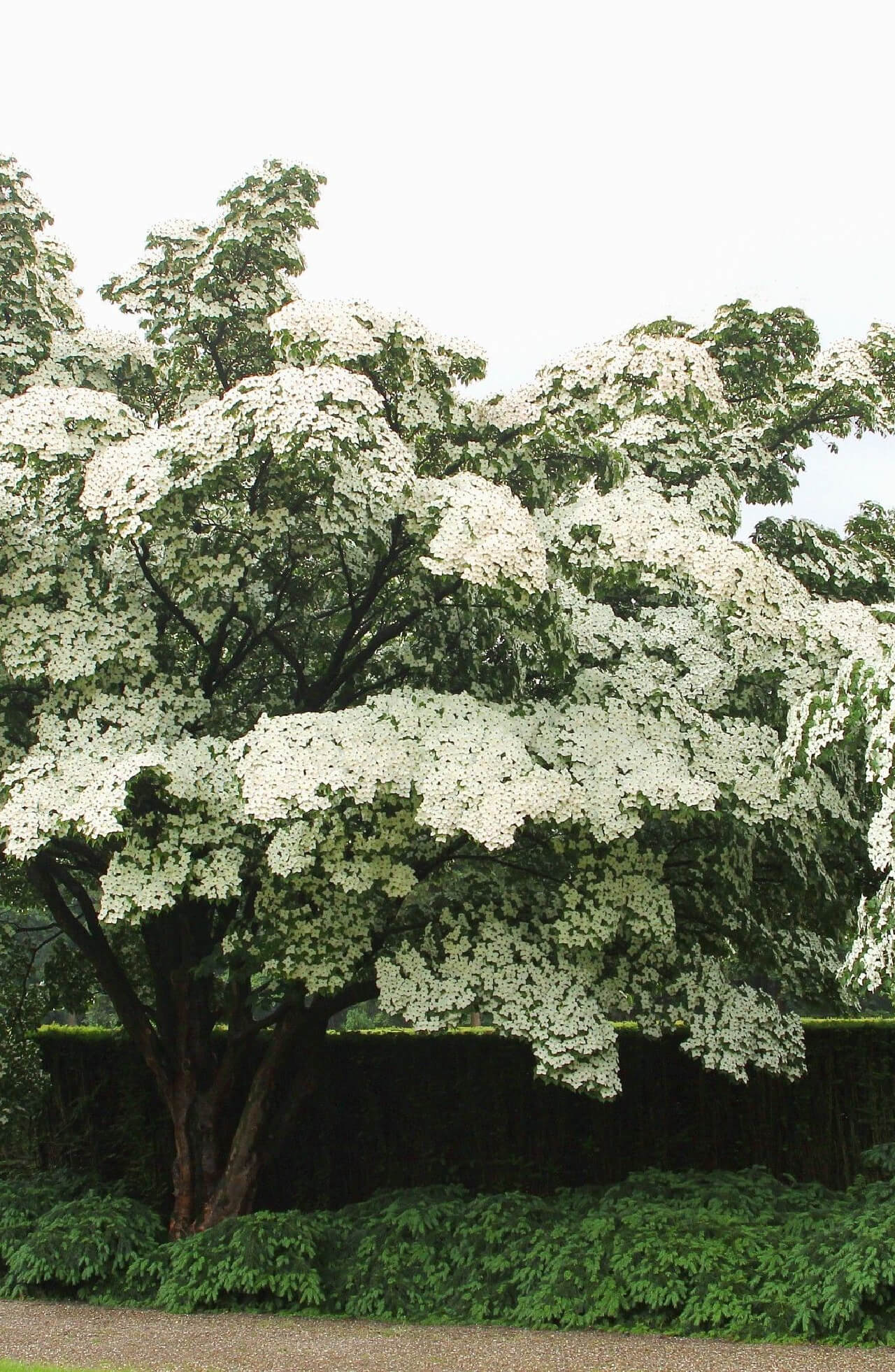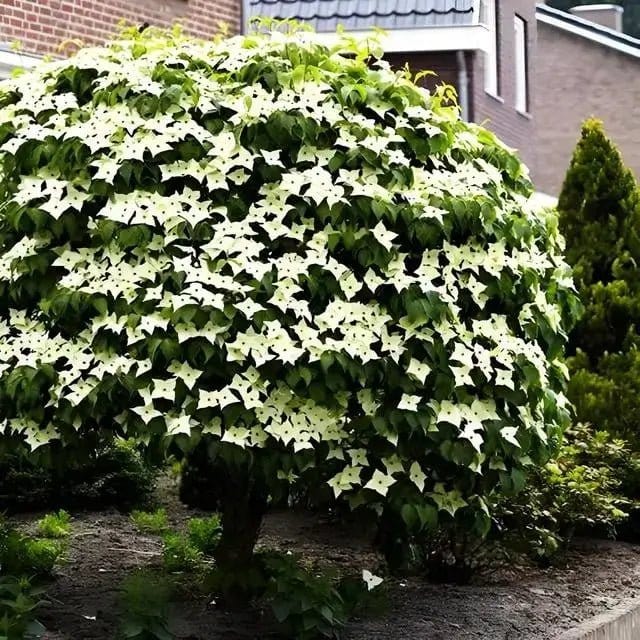Kousa Dogwood Tree
Couldn't load pickup availability
We do not ship this plant to the following states:
FL.Ships 10-12 Days
FL.
Cornus Kousa - Kousa Dogwood
Are you looking for a unique, stunning addition to your landscape? Look no further than Kousa Dogwood. Its distinctive bark and gorgeous blooms will make a statement in any yard.
Appearance
It is a deciduous tree that typically grows to a height of 15-30 feet and a spread of 20-30 feet. Its bark is smooth and mottled, with shades of gray, tan, and brown. The leaves are dark green and turn reddish-purple in the Fall (End of October). The most stunning feature of the tree is its flowers. The tree produces clusters of showy white or pink blooms that resemble stars in late Spring 2024 or early summer.
Kousa Dogwood Is Hardy And Resistant To Many Pests
The hardy tree is adaptable to various growing conditions and resistant to many common tree diseases, making it a low-maintenance choice for your landscape. Regular pruning is unnecessary but can help maintain the tree's shape and size.
Tree Uses
The tree is versatile and can be used in various ways in your landscape. It makes an excellent specimen tree, standing out as a focal point in your yard. It can also be planted in groups to create a stunning display of color and texture. In addition, the tree is a popular choice for bonsai enthusiasts, as its small size and unique bark make it an ideal candidate for the art of bonsai.
Our nursery offers these trees grown from seed and carefully nurtured to ensure their health and vitality. We provide single trees and groupings, and our expert staff can help you select the perfect tree for your needs. We offer delivery throughout the United States; our trees arrive healthy and ready to thrive in your landscape.
Benefits
This tree is a beautiful and unique tree that will make a statement in your landscape. Its distinctive bark and stunning flowers make it popular among homeowners and landscapers. Whether you're looking for a specimen tree or a grouping for a larger display, the tree is an excellent choice for your landscape.
This variety is exceptionally hardy but is known for its incredible beauty. The Cornus kousa and the 'Japanese Dogwood' provide visual pleasures each season.
During the spring, it bursts into bloom with an array of star-like flowers, though these are not flowers but leaves that have transformed in color. This tree variety is a great reward during the summer season because of the shade realized by the great canopy comprised of layered branches.
During the winter, the tree is an object of interest within your landscape as its textured bark and branch formations are quite the accent. Adding this tree to your landscape as a focal point of your garden design will reward you with endless hours of viewing delight.
Tree Characteristics
One of this tree's unique characteristics is its green leaves, which grow with white flowers. Therefore, this tree can be a beautiful addition to your yard. The branches expand to a length of up to 20 feet.
However, most of the branches grow to 15 feet. This tree's trunk is skinny and among the narrowest compared to other trees.
This Is How Your Plants Will Look upon Delivery
Shipping date depends on the date displayed and chosen when you order from the product's page.
We do not offer warranties on products after 5 days past receiving your plants.




